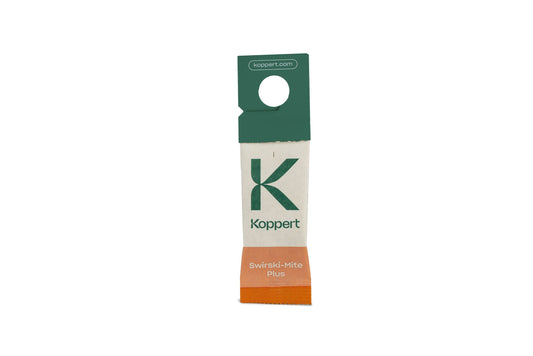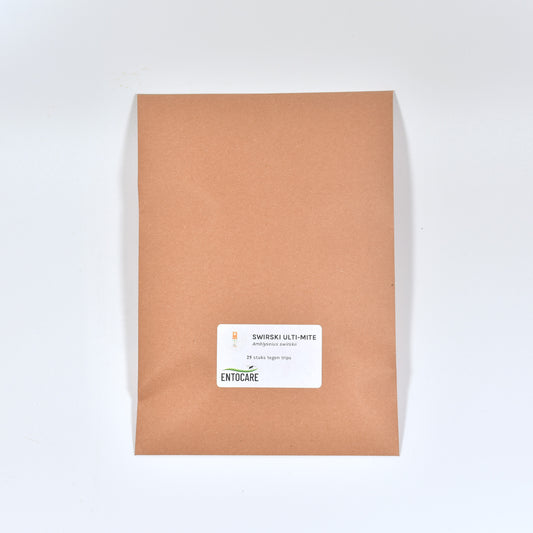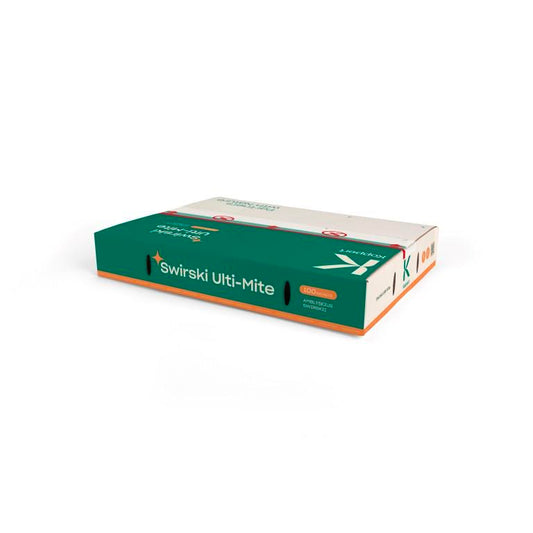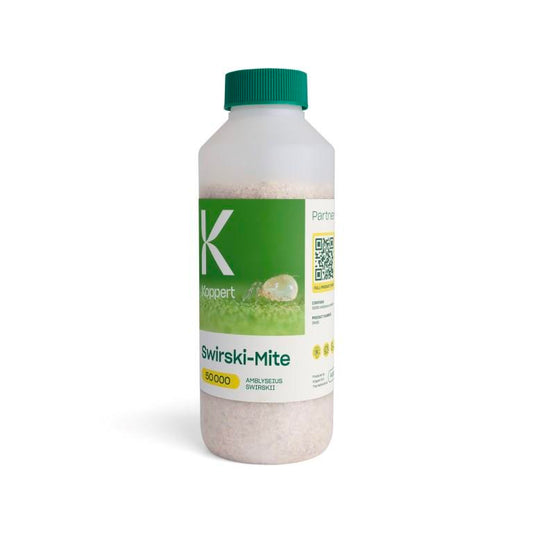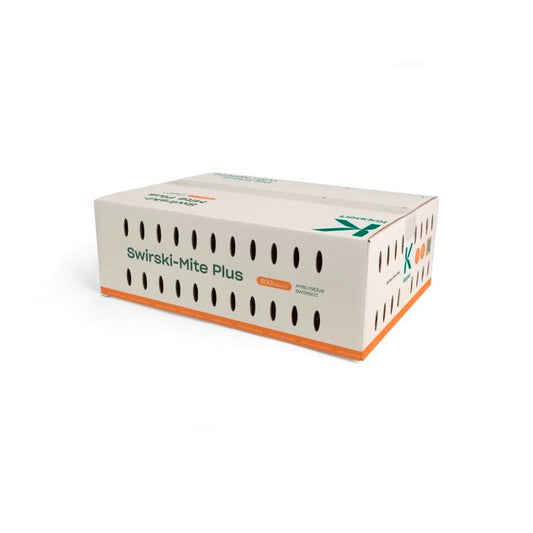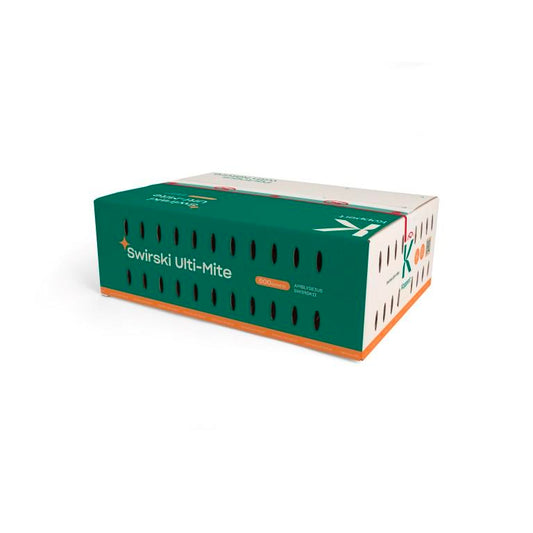
How to recognize false spider mite
False spider mites resemble normal spider mites somewhat in color. The difference is in the more complicated spot pattern on the back of false spider mites. False spider mites are 0.3 mm long and relatively flat. Because of their small size they are barely visible with the naked eye. The eggs are ellipse-shaped and orange to red colored. They are usually found along veins at the base of the petiole on the underside of the leaves. The brightly colored eggs can be used to determine this pest. Egg clusters usually contain eggs of several females. Freshly hatched mites have six legs, are bright orange colored and approximately 0.14 mm long. Adult mites have eight legs of which four are pointed backwards and four forwards. They move relatively slow. False spider mite populations are usually 99% female and reproduce by parthenogenesis.
False spider mite damage and distribution
Clear feeding damage is only visible during heavy infestation. Leaves with feeding damage first turn yellow after which they turn brown, starting from the veins and expanding over the leaf, resulting in early leaf drop. Other symptoms are deformation of leaves and fruits. Infestation in hedgerows can be spotted as brown, dull spots in the hedgerow. In addition, mites can spread viruses.
Products against False spider mite
-
SWIRSKI-MITE PLUS - 25
Vendor:KoppertRegular price €22,68 EURRegular priceUnit price / per -
SWIRSKI ULTI-MITE - 25
Vendor:KoppertRegular price €29,25 EURRegular priceUnit price / per -
SWIRSKI ULTI-MITE - 100
-
SWIRSKI-MITE - 50.000
-
SWIRSKI-MITE PLUS - 100
-
SWIRSKI-MITE PLUS - 500
-
SWIRSKI-MITE - 250.000
-
SWIRSKI ULTI-MITE - 500
-
Life cycle false spider mite
30 eggs per female
mainly females hatch from eggs
parthenogenetic reproduction
lifecycle possible between 20 ⁰C and 30 ⁰C
egg to adult: 18 days at 30°C to 48 days at 20°C -
Host plants false spider mite
polyphagous
Phalaenopsis, Schefflera
hybiscus, palm
geranium
privet
-
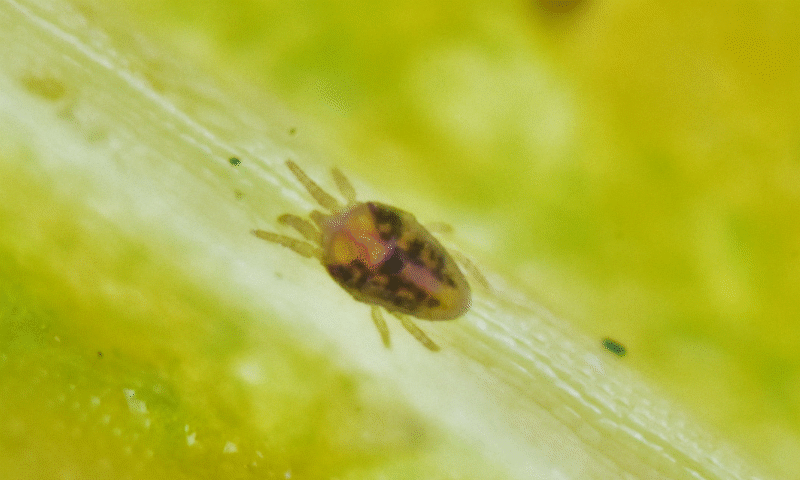
False spider mite close-up
-
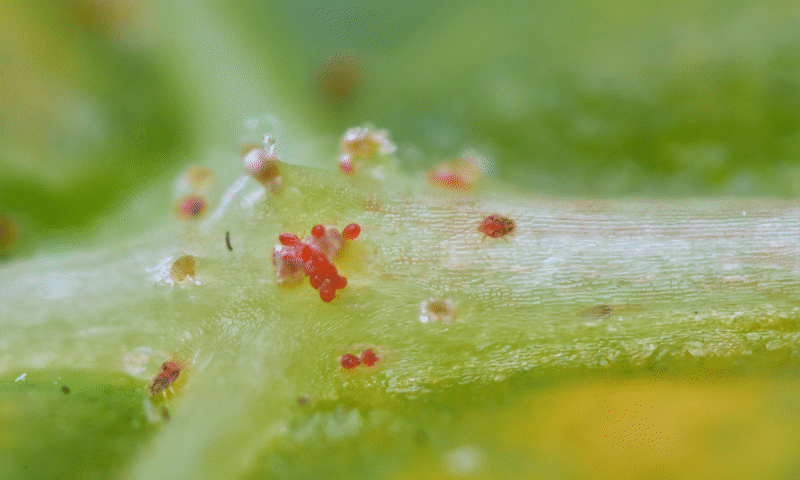
False spider mite eggs and adults

